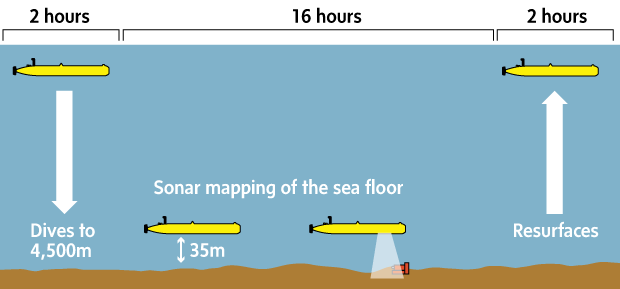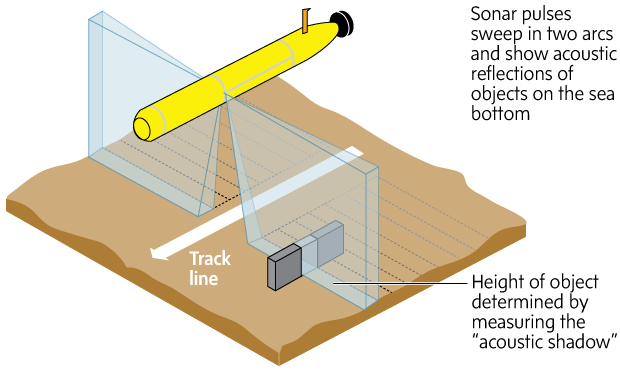Search crews sent a robotic submarine deep into the Indian Ocean for the first time Monday after failing to pick up any signals from the missing Malaysian airliner's black boxes for six days. Crews have picked up a series of underwater sounds over the past two weeks that are consistent with signals from an aircraft's black boxes, which contain flight data and cockpit voice recordings. The devices emit "pings" so they can be more easily found, but their batteries last only about a month, and it has been more than a month since the plane vanished.

Bluefin-21 remotely controlled unmanned submarine
The unmanned underwater vehicle, the Bluefin-21, is just shy of 5 metres long. Searchers sent a remotely controlled submarine deep into the Indian Ocean Monday evening from the Australian navy ship Ocean Shield. The autonomous sub can create a three-dimensional sonar map of any debris on the seafloor.

Spotlight search technique will take as long as a day
The submarine will take 24 hours to complete each mission: two hours to dive to the bottom, 16 hours to search the seafloor, two hours to return to the surface, and four hours to download the data. In its first deployment, it will search a 40-square kilometre section of seafloor.

Searchers say this will be a slow, painstaking process
The Ocean Shield had been dragging a U.S. Navy device called a towed pinger locator through the water to listen for any sounds from the black boxes’ beacons. The Bluefin sub takes six times longer to cover the same area as the ping locator, and the two devices can’t be used at the same time. Crews had been hoping to detect additional signals before sending down the sub, so they could triangulate the source and zero in on where exactly the black boxes may be.
“I would caution you against raising hopes that the deployment of the autonomous underwater vehicle will result in the detection of the aircraft wreckage. It may not,” said Angus Houston, the head of a joint agency co-ordinating the search. “However, this is the best lead we have, and it must be pursued vigorously. Again, I emphasize that this will be a slow and painstaking process.”
Graphics source: BBC and Graphic News